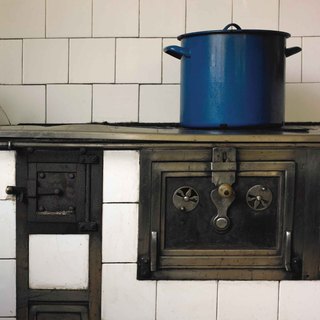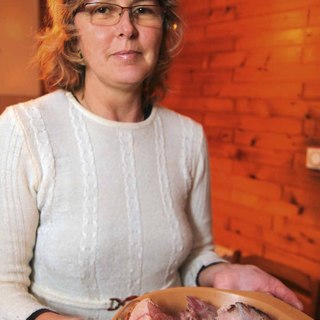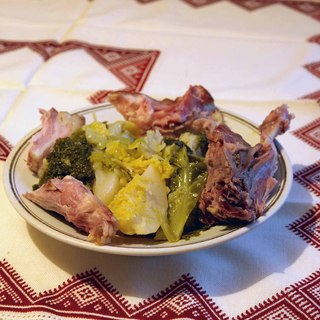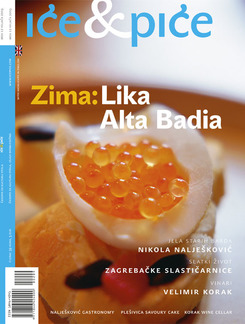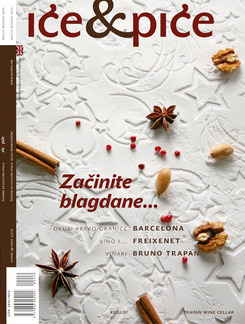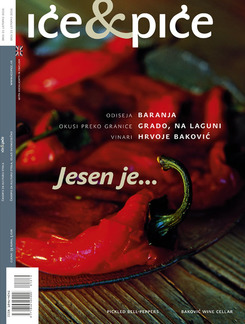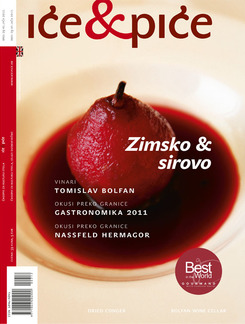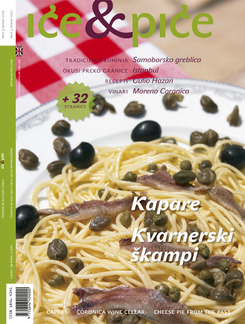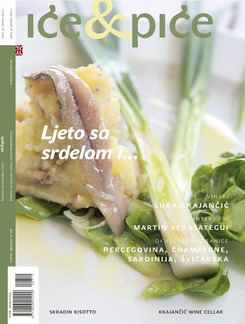The carollers set off on Christmas Eve, soon as it gets dark. We’ve come to carol to you, to give praise to your halls. The housewife won’t be unfestive, not to give to the carollers... rang out on the wet stone streets, the city waterfronts hazy with the drops of the shattered waves, heard before the steps and terraces in front of the houses, came from the front rooms behind the lighted windows...
And what will the festive housewife give to the carollers? Up to midnight almonds, walnuts, candied orange, oranges, dried figs, mantala of shortening, wheat and almonds, quince paste... all nice, but fasting fare. But then from midnight, after the Gloria. Mmmm... of course, green menestra or vegetable soup. That’s what we’ve been waiting for all day. What, the whole day, no, the whole year.
When one came from the midnight mass, green menestra was carried onto every table in the Dubrovnik region. That kind of custom had been for ever and thus today in every house that has a good opinion of itself. As they would say in Konavle, every big house had at Christmas on the stove a big pot of the best green menestra. If anyone entered the house, whether from the family or a caroller, they had to be treated with it. Accounts of green menestra date in Dubrovnik back to the 15th century. It’s winter food, but they would also enjoy it at other times of the year. The Christmas version was the most important, it had to be the best, from the best pieces of meat, the best cabbage and particularly the borecole. The carollers would come, and afterwards they would talk about whose house had the best menestra, and the one who had the best soup was the best host, that was clear.
How is green menestra – soup – made? And perhaps first and most important, what is it made of? Of the best cured meat, pork and goat and perhaps sheep, borecole, heads of cabbage, kale, potato. Perhaps with green beans if it is made at the time the string beans are young. Christmas menestra had to have at least a piece of cured pig’s head and feet, for the pig with its snout always pushed everything onwards, and the year, which grew from Christmas, would also push everything on. It was best to place of piece of prosciutto, a piece of pancetta, a piece of dried goat or sheep ham and domestic sausage. The meat is first of all washed in tepid water to remove the soot from the smoke. It is also put into tepid water to cook, and after it starts to boil, after ten minutes, the water is thrown out. In this way the undesirable smoke products are removed and the meat can be started to be got ready for the soup. Then the meat is put into tepid water to cook again, all except the sausages. These are put in near the end, because they get cooked a lot sooner than the meat. The meat is cooked, depending on the size of the pieces, for two to three hours. When it is soft, the sausages are added, then the potato, peeled and cut into quarters. Just before the end, borecole or sea kale. It’s said to be the best when the salt spray has been on it, and then it puts out young shoots that are picked just for this green menestra. And the dish got its name from them, because they are so dark green in colour, and dominate the look of the dish. In the Dubrovnik region there is kale in every garden, always at the edges, where it best catches the spray. After the kale has boiled through well, the heads of Savoy cabbage are added, cut up roughly into four parts. When this has boiled well, at the end kale is added, which needs the least time to cook. Almost no herbs or spices need adding, except perhaps salt, if the menestra is not salty enough from the meat that was cooked in it. For this dish, the quantity of liquid is very important. There mustn’t be too much or too little, it mustn’t be too soupy or to gulashy, rather, somewhere in between, a kind of thick soup. It is served on oval plates that are not completely shallow; first of all one places a heap of potato and cabbage, and then around it, pieces of boiled cured meat. Then the liquid of the menestra is poured over it. As a side dish, coarsely sliced onion is served, which goes excellently together with the green menestra.
The people have long since been unanimous that the best green menestra is made of the bone of a cured ham. This opinion has been passed down through the generations. But when you ask one of the champions of this tradition what he would like to get on his plate of menestra, a piece of bone or a piece of ham, of course it is a piece of ham. Why then is the green menestra made with a ham bone so much praised? Here’s how. Once, when there was not so much food as today, every house was expected to have menestra for Christmas and to treat the carollers and other well-wishers, the story about the best menestra being made of bone was pushed. The gentry would take the pieces of ham for their own table, and the people were left with the bones, as well as the enticing scent of the menestra, which was just as good as with the meat, and it seemed that there was nothing better than that.
There are other such stories in Dubrovnik cooking lore; but they can wait for another time.
